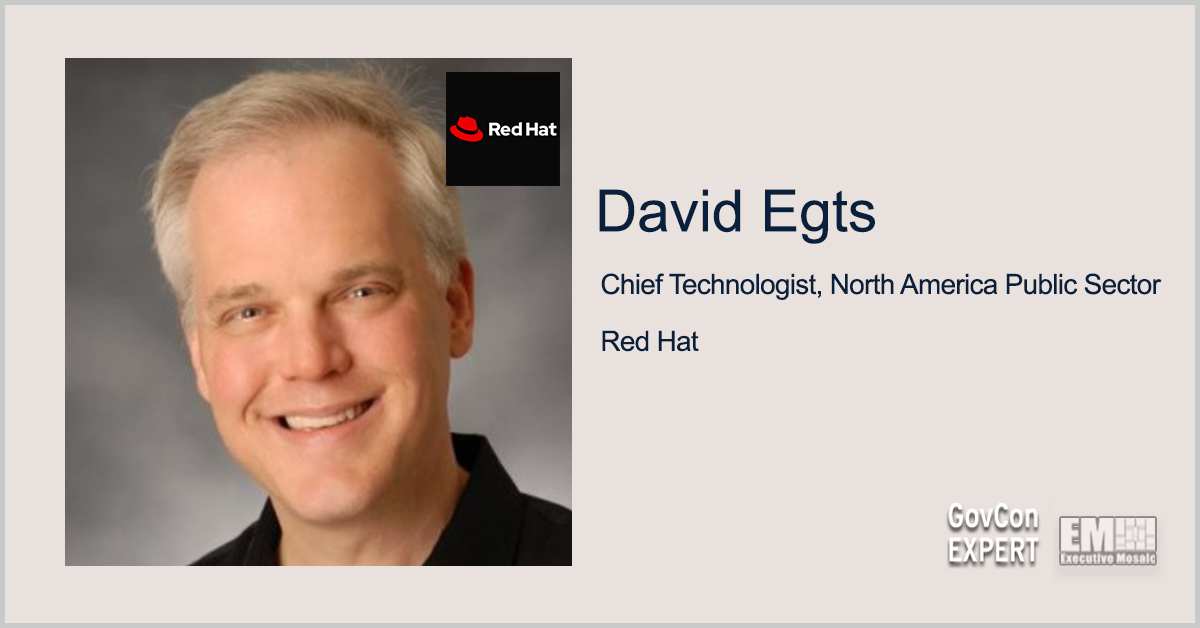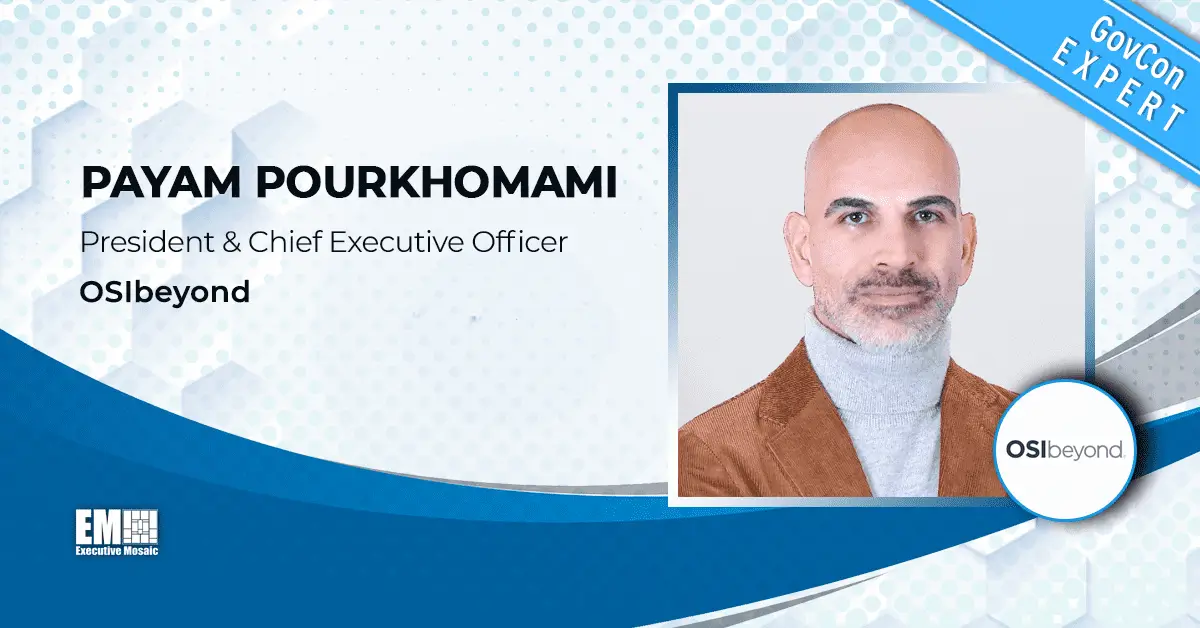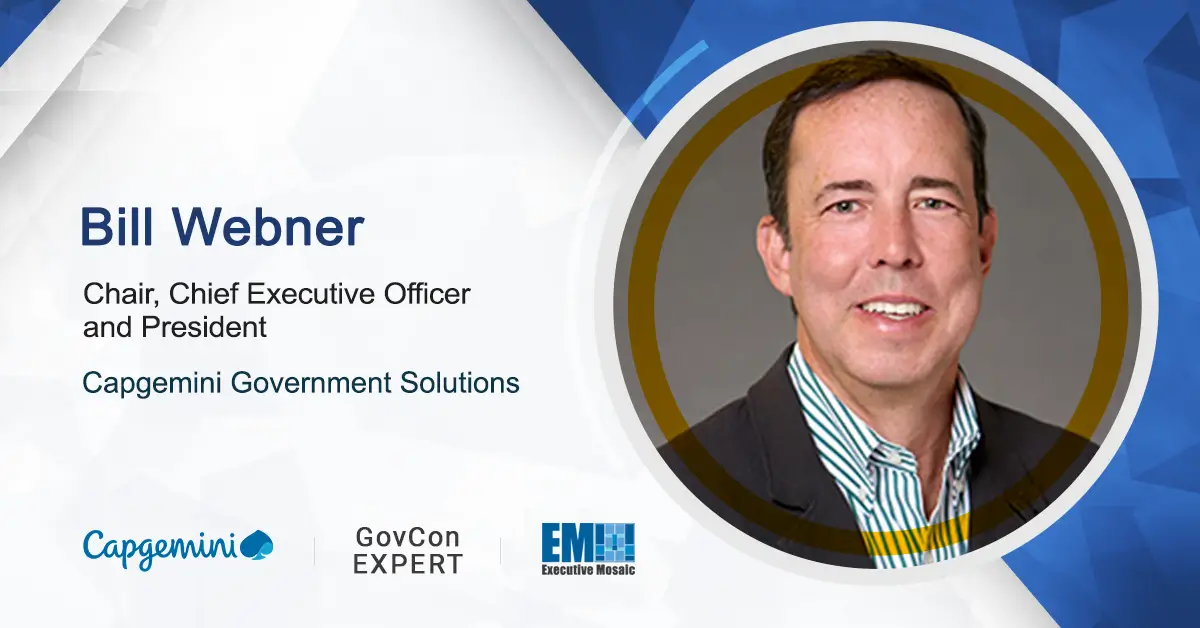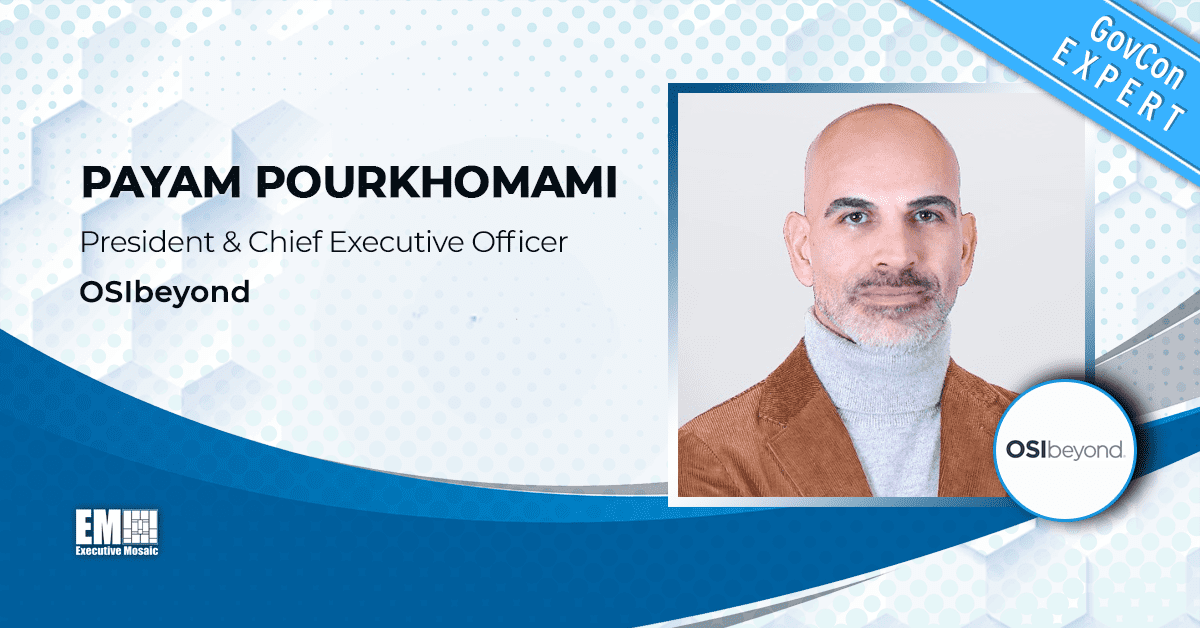GovCon Expert David Egts, chief technologist and senior director of the Office of the Chief Technologist for Red Hat’s North America Public Sector, recently spoke with GovCon Wire regarding the current administration’s Executive Order on transforming the federal customer experience and what it means for government agencies and the systems integrators that support them.
In addition, Egts provided recommendations on how agencies can improve their development processes to deliver better citizen experiences faster. Among his suggestions: a greater focus on automation, getting inside the heads and emotions of citizens, and reducing the amount of “sludge” that both IT professionals and citizens have to go through for government services during the latest Executive Spotlight interview.
You can read the full interview with GovCon Expert David Egts below:
GovCon Wire: The Biden Administration issued its Executive Order calling for federal agencies to transform the federal customer experience. What are your thoughts on the EO, and how can agencies reduce what the Administration calls a “time tax” on citizens?
David Egts: “The Executive Order is a necessary step forward that gives clear direction on what agencies should do to improve the citizen experience.
It essentially asks agencies to put themselves in their users’ shoes and say, ‘If this were me, would I want to spend hours on the phone to get Social Security benefits? Would I want to have to sign into multiple websites to engage with my government when I can stream videos and buy toothpaste with a single login?’
The Administration calls this a ‘time tax.’ I and others refer to it as ‘sludge.’ Sludge is all those little things that add up and impede the user experience and organizational efficiency. It makes applying for benefits and other services feel like wading through a vast pool of bureaucratic muck.
Sludge starts small, builds up internally, and eventually seeps into the citizen experience. For example, an agency might have multiple web portals that users need to navigate to get a single service.
They might lack digitization and require users to fill out and mail paper forms after going online to request a service. Or, they might have numerous internal processes across different parts of the organization and various unintegrated systems required to approve one application.
All that sludge mucks up the works internally. Teams spend considerable amounts of time manually managing and keeping track of all the processes and tools, which prevents them from focusing on the users and improving their experience. And users suffer because they have to go through all these unnecessary steps on the front end.
The key to reducing the sludge is to perform an audit and closely look at where the sludge exists within your organization. Maybe it’s in a 50-year-old legacy system or simply in a series of unnecessary steps that a user has to take to apply for benefits.
Once you’ve identified the sludge, start cleaning it out. Replace it with automated and integrated systems and processes that can expedite your ability to provide better citizen services.”
GovCon Wire: How can automation help federal agencies provide exceptional citizen experiences with limited financial resources and deliver a better customer experience?
David Egts: “Despite the EO, delivering a great citizen experience continues to be an unfunded mandate for many organizations. That’s challenging, but automation can overcome this challenge. Instead of looking for an additional budget to meet these mandates, automation can free up the capacity of the existing staff to focus more on customer experience.
Think of the mundane and time-consuming tasks that take up hours a day. Is it necessary to have IT teams stop what they’re doing and go through X number of steps just to handle a new user request? Is it necessary for a customer service representative at the IRS to manually process every citizen inquiry that comes through their system?
Having people spend hours on these jobs can be costly, both from a financial and a citizen service perspective. You’re paying people to do things that computers can handle and keeping them from focusing on exceptional service delivery.
Additionally, IT teams can use Linux containers and Kubernetes to scale applications automatically as demand fluctuates. Containerization and orchestration can be incredibly helpful and cost-effective during seasonal events like tax season or open enrolment.
Ultimately, automation can help save time and money and empowers teams to focus on delivering value-added services to citizens rather than painstaking processes that don’t add real value. IT teams can focus more on creating better and more powerful applications quickly and leaving these teams with more time to devote to personalized customer service.”
GovCon Wire: What other processes can agencies adopt to deliver better citizen services quicker?
David Egts: “The federal government likes to take big swings at just about everything it does. But when I talk to customers, I encourage them to think smaller and more incremental, at least in terms of application development, beginning with striving for continuous integration and continuous delivery (CI/CD).
CI/CD incorporates ongoing automation throughout the application development lifecycle. Changes to an application are automatically tested for bugs and vulnerabilities, for example. CI/CD helps get rid of sludge in the development process to build and deploy new applications quickly, allowing you to get new services out to citizens at a rapid pace.”
GovCon Wire: What about something like DevSecOps, which many agencies are turning to, especially in light of heightened security concerns. How can DevSecOps help deliver a better citizen experience?
David Egts: “DevSecOps goes hand-in-hand with CI/CD. With DevSecOps, security is incorporated throughout the development process. Developers, security professionals, and operations teams work together to expedite their applications’ development, testing, securing, and deployment.
DevSecOps makes it easier to deliver new applications faster, but it also helps agencies quickly make incremental improvements to existing applications. With DevSecOps, they can make small adjustments to current services. These seemingly minor adjustments could make huge, positive differences in the user experience.”
GovCon Wire: Processes and technology are great, but first, you need to get into citizens’ heads to understand what they’re looking for, right? How can IT teams empathize with the needs of citizens when they’re so far removed from them?
David Egts: “True, it’s not easy for a developer who’s sitting at a computer all day working on code to understand what the person calling into the call center or sending an email to customer care is going through in their daily lives.
Chances are if they’re contacting a government agency, they need something pretty quickly. They might even be under some stress, as we saw during the height of the pandemic when people were applying for unemployment benefits and other social services.
That’s why the practice of business process mapping is so valuable. Business process mapping takes several different forms and steps.
First, there’s impact mapping. Here, development teams map business goals to the impacts they’ll have on citizens and their agencies, and the deliverables needed to achieve their objectives.
That leads to empathy mapping. This is the practice of understanding users through empathy. This mapping distills, categorizes, and documents user needs for all to factor into their prioritization of development.
Then, teams get into event storming. This is a rapid, interactive, and visual form of business process discovery. It factors in the impact and empathy maps resulting in the prioritization of work by linking the implementation details to the business processes.
Finally, teams can create story maps and product roadmaps. A story map collects all of the ideas collected during the previous phases. It allows development teams to visualize their applications in full based on impact, user experience, features, and more.
They can also identify possible gaps in the design and fix them before deployment. With all of this information in hand, development teams can build out their product roadmaps and release plans, measure the success of their applications post-deployment, and make iterative changes to both their applications and their mapping processes as necessary.
The good news is that getting started with these processes is actually pretty simple and fun. I recommend taking a look at the Open Practice Library, which features tutorials on how to incorporate these techniques into your development workflow.
I also recommend a great book called Accelerate: The Science of Lean Software DevOps: Building and Scaling High Performing Technology Organizations. It gives an excellent overview of accelerating development and objectively measuring and driving organizational value.”
GovCon Wire: What are some other things resonating with your customers right now regarding delivering a better citizen experienc
David Egts: “One of the things I talk to them about is this aspirational concept I call the ‘virtuous flywheel.’ Essentially, you want to get to where delivering great citizen experiences efficiently and cost-effectively becomes second nature. If you can do that, you’ll be able to increase development velocity and continuously deploy applications that make users’ lives easier.
I always use the example of a person who needs to go to court to contest a speeding ticket. Let’s say that person pays for parking downtown, but the court date runs long, and they can’t leave the courtroom to put more money in the meter. Then, they get a parking ticket on top of their speeding ticket, putting them in an even bigger quandary.
Wouldn’t it make sense for that person to be able to sign onto an app and pay the meter fee by phone? It’s a much more straightforward and user-friendly approach. Plus, it gets the agency their money faster, prevents lost work resulting in income tax revenue, and potentially helps break the cycle of dependence on government services—a virtuous flywheel
Something so small can make a big difference to a citizen. The problem is that agencies are often too bogged down in inertia to deliver this holistic experience. But that’s where sludge auditing, automation, business process mapping, and so forth can make a big difference.
These exercises and solutions can help make processes more efficient and get rid of the things holding them back. That frees up more time and resources to develop new services that genuinely help people, making government more efficient. That’s a win/win for everyone, in my opinion. And it’s how government agencies can build better relationships with their citizens.”







